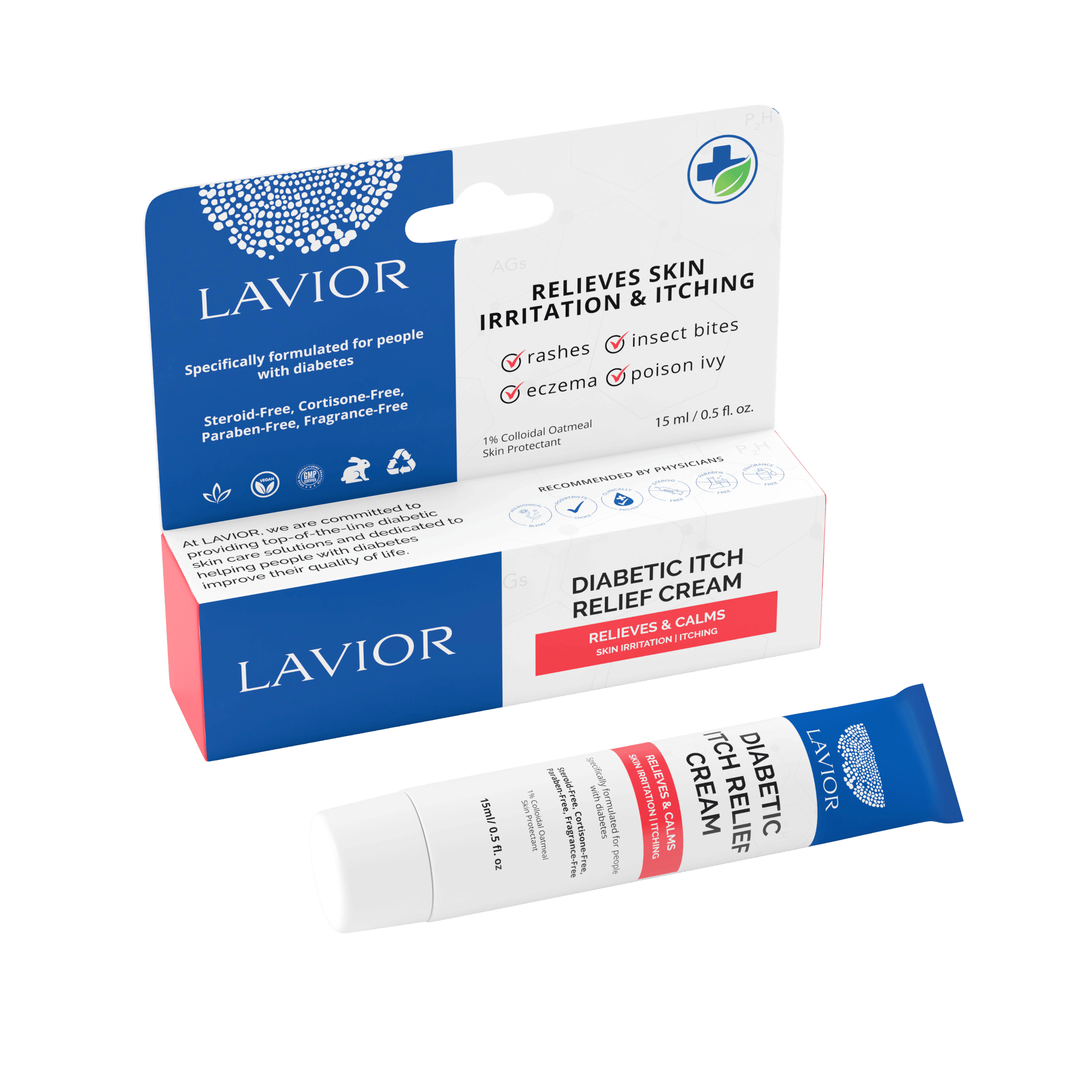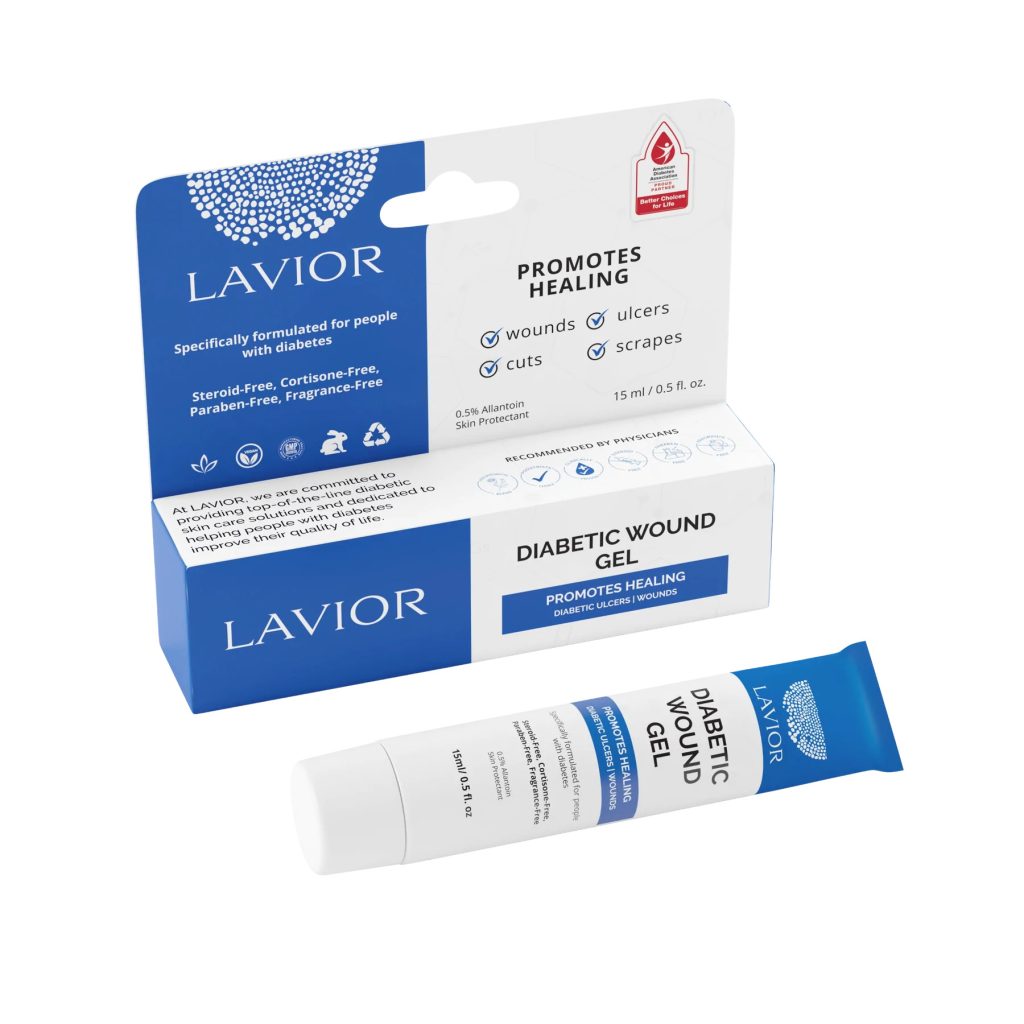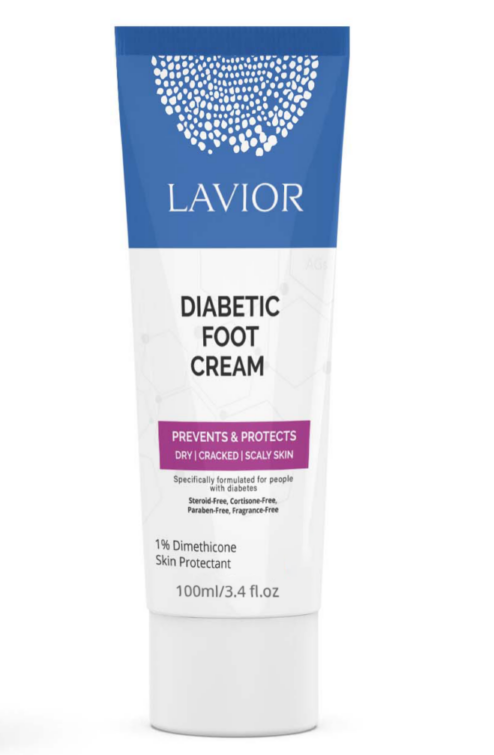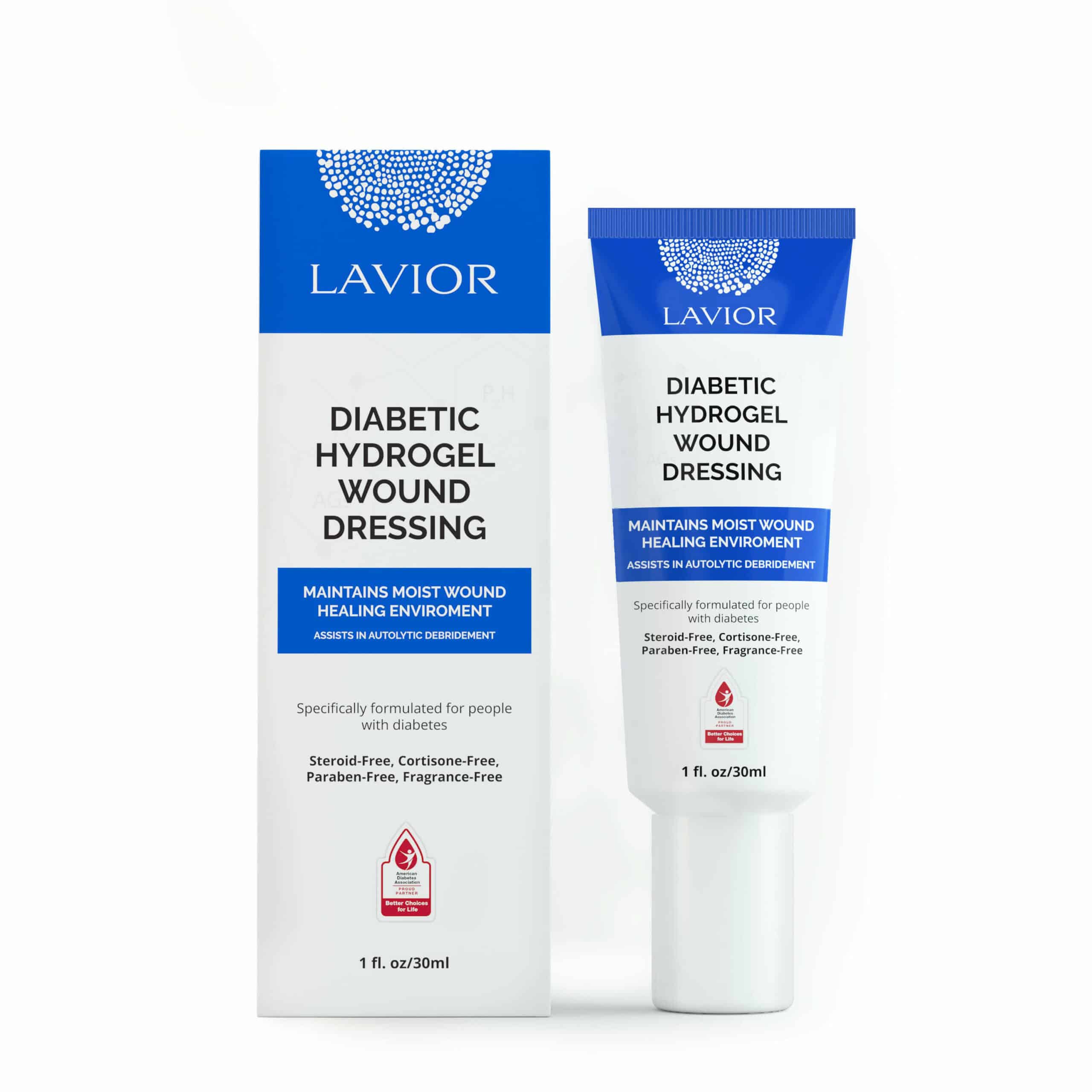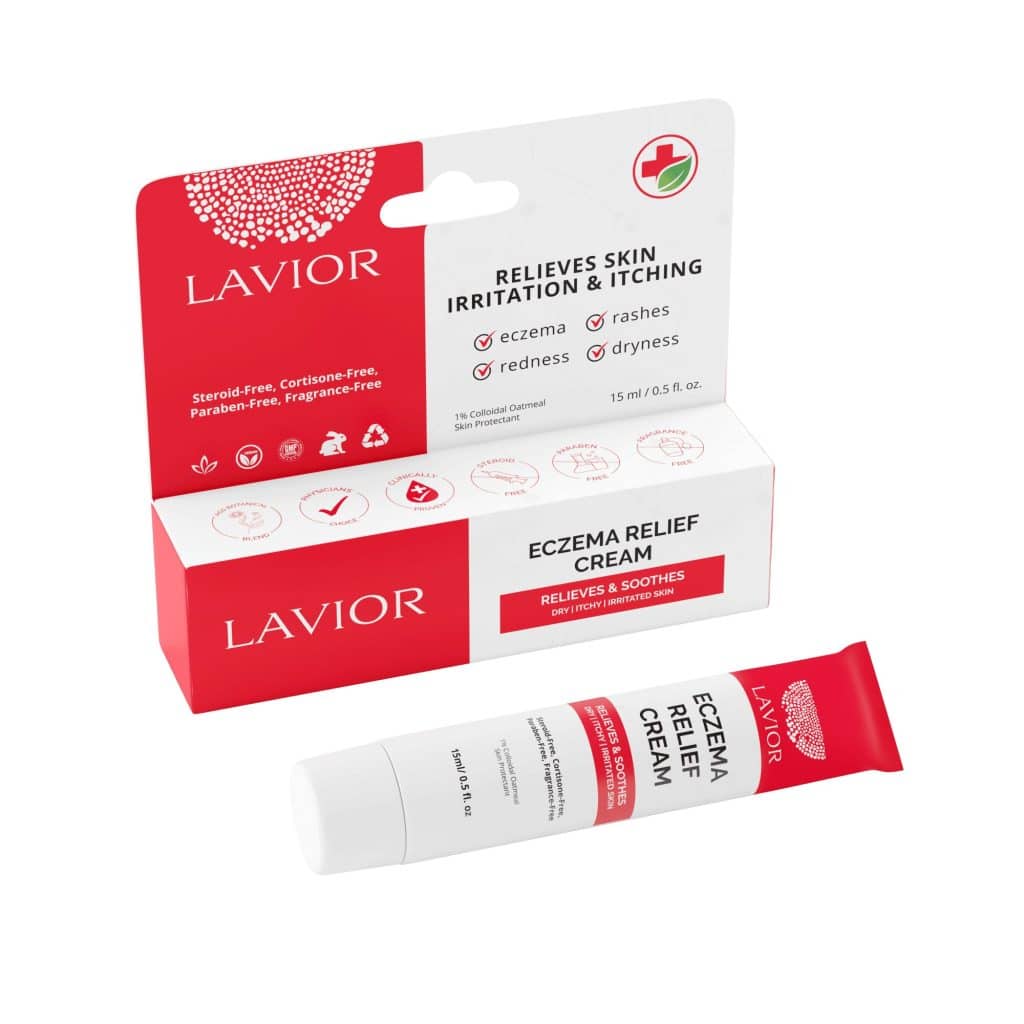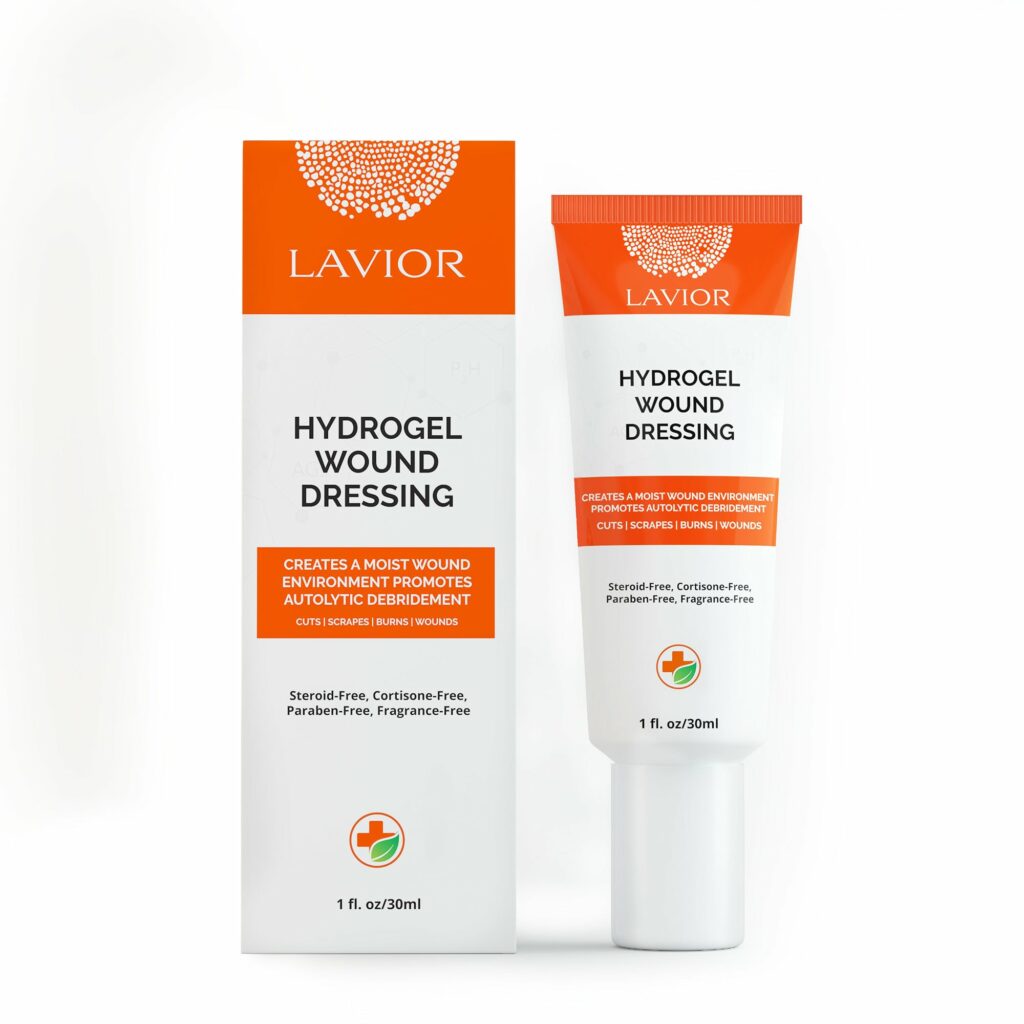Eczema is the term for a group of inflammatory skin conditions that causes dry skin, itchiness, rash, scaly patches, and related symptoms. This skin disorder can begin at any age, and more than 10% of all people in the US have some form of eczema (1). Meanwhile, skin disorders such as eczema affect 80% of adults afflicted with diabetes (2). The following describes five different types of eczema, as well as the most common skin conditions experienced by people living with diabetes. Additionally described is why diabetes increases the risk for eczema, and how Lavior Eczema Relief Cream may help you to lessen your symptoms of eczema.
Recognizing the Different Types of Eczema
There are several different types of eczema, according to the National Eczema Association (3). Among these are:
- Dishidrotic eczema – this type dries out the skin and can cause blisters, a burning sensation, and rashes.
- Atopic dermatitis – this type is most common in young children, and causes inflammation, dryness, and itchy skin.
- Neurodermatitis – this type is also called discoid eczema and affects small patches of skin; it causes the affected skin to become scaly and itchy.
- Contact dermatitis – this type is also called allergic contact dermatitis and is caused by environmental triggers.
- Nummular eczema – this type creates small, round lesions anywhere on the body, but especially on the arms and/or legs.
It is not uncommon for affected adults to have more than one type of eczema at a time. Notably, the skin of people with eczema often has a higher level of Staph. aureus bacteria than normal. In turn, this can promote inflammation in eczema-affected skin that does not ‘look” infected (4). Since diabetes can increase infection risk that can lead to nonhealing skin ulcers, managing your eczema as a diabetic is vital for your overall health.
Common Skin Disorders Linked to Diabetes
The Centers for Disease Control includes the following skin conditions most commonly found in people with diabetes (5):
- Acanthosis nigricans (AN):
This causes a dark patch, or bands of velvety-appearing skin, that especially appears in body creases such as the neck or armpits. It is a sign of insulin resistance.
- Diabetic dermopathy:
This is also called diabetic shin spots, and it appears as red or brown patches (or lines) in the skin. It is caused by the changes in blood vessels linked to diabetes that reduces blood supply to the skin.
- Bullosis diabeticorum (diabetic blisters):
These look like burn blisters, and most often develop on the lower legs and feet. They are typically painless and are more common in people with diabetes who frequently have periods of persistently high blood sugar levels.
Why Does Diabetes Increase the Risk for Eczema?
Both Type-1 and Type-2 diabetes increase the risk for developing eczema and skin itchiness. Furthermore, an overly high blood sugar level can also negatively affect the skin.
Therefore, the consequence for a person who is diabetic can be persistently dry and itchy skin. Since diabetes also increases the risk for infection in small cuts and scratches due to poor wound healing, scratching itchy skin is more likely to result in an infection. In this way, diabetes can increase your overall risk for eczema and other skin problems.
Understanding Skin Creams used by People with Diabetes
The daily use of skin moisturizers and gentle cleaners is recommended for people with diabetes, per a recent article in the Journal of Drugs in Dermatology (6). This may reduce the likelihood of developing skin abrasions that heighten the risk of skin ulceration in diabetics. The American Academy of Dermatology Association recommends that people living with diabetes use a skin cream or ointment – rather than a lotion – and that this cream or ointment should be fragrance-free (7).
Lavior Eczema Relief Cream – Its Advantage
Lavior skin creams have been developed especially for diabetics, but are also safe for people without diabetes. Lavior Eczema Relief Cream is a fragrance-free botanical (or naturopathic) product that is especially formulated for sensitive skin. It reduces inflammation and redness, while also providing relief for dry, cracked, flaky, or irritated skin.
References:
- National Eczema Association. Eczema Stats. Website: https://nationaleczema.org/research/eczema-facts/
- David P, Singh S, and Ankar R. (2023). A Comprehensive Overview of Skin Complications in Diabetes and Their Prevention. Cureus 15(5): e38961. Webpage: https://www.ncbi.nlm.nih.gov/pmc/articles/PMC10259731/
- National Eczema Association. Seven Types of Eczema. Webpage: https://nationaleczema.org/eczema/types-of-eczema/
- George SM, Karanovic S, Harrison DA, et al. (2019). Interventions to reduce Staphylococcus aureus in the management of eczema. Cochrane Database of Systematic Reviews 2019(10): CD003871. Webpage: https://www.ncbi.nlm.nih.gov/pmc/articles/PMC6818407/
- Centers for Disease Control (CDC). Diabetes and Your Skin. Webpage: https://www.cdc.gov/diabetes/library/features/diabetes-and-your-skin.html
- Kirsner RS, Yosipovitch G, Hu S, et al. (2019). Diabetic Skin Changes Can Benefit from Moisturizer and Cleanser Use: A Review. Journal of Drugs in Dermatology 18(12): 1211-1217. Webpage: https://pubmed.ncbi.nlm.nih.gov/31860208/
- American Academy of Dermatology Association (AAD). Dermatologist-Recommended Skin Care for People with Diabetes. Webpage: https://www.aad.org/public/diseases/a-z/diabetes-skin-care



